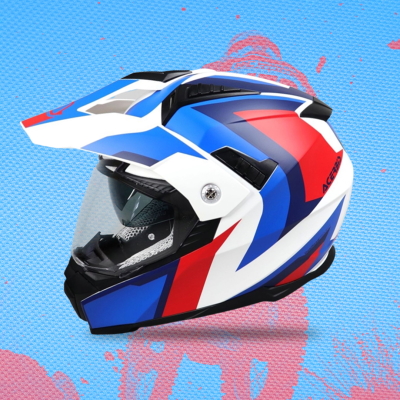
Home > general information > Tips and Guides > Technical guides > Generalists >
What is the new ECE 22.06 standard for motorcycle helmets?
From July 2022, the helmet certification standard is changing. After the 22.05, which concerns all helmets in circulation since 2007, the standard ECE 22.06 will take over for all models of homologated motorcycle and scooter helmetsar manufacturers from the summer of 2022.
For concerned manufacturersar this new standard, the next deadlines have already been set since if they will have to have their new products approved according to the standard 22.06 from July 2022 they will also have to stop production of helmets that meet the standard 22.05 in July 2023, before stopping the marketing from 2024.
Concretely, the new standard ECE 22.06 will push helmet resistance tests, with 18 impact points checked, some of them randomly, against only 6 at specific locations for the standard 22.05.
Objectives of the ECE 22.06 standard
The objective of this law is to improve the requirements of the standard ECE 22.05 which is no longer quite up to date.
The specifics of the new law
The new standard aims 22.06 to impose more security through stricter tests and controls. The materials, the technology as well as all the equipment must be able to provide more assurance to the motorcyclists. To obtain the certificate 22.06, helmets will be subjected to more severe tests. From now on, certain elements of the helmet will have to resist shocks of all forms, and this, at a much higher speed.
Indeed, the tests will be carried out at a faster speed, in order to understand collisions with motorway equipment and street furniture. The height will also be greater in order to assess the resistance of the helmet to shocks.
The tests applied to all motorcycle helmet accessories for the ECE 22.06 standard
The new certification rule applies to both helmets and equipment. The tests thus concern all the accessories offered.ar the manufacturers. Among others, the intercoms and the visors.
These accessories will be tested at the same time as the helmets. In this sense, motorcyclists will only be able to use helmets with approved and tested accessories. Otherwise, you will be considered to be wearing an uncertified helmet, which is subject to penalties.
As for internal sun visors, they must not reduce the field of vision below 105°. They must also not block the opening and closing of the main visor. Otherwise, headphones are not allowed.
As for the tinted visors, the transparency will now be able to be 35% against 50% today. In addition, they must have a marking that particularizes daytime use only. For photochromic visors, the test will be based on the maximum tint level. Indeed, these models are subject to an automatic tint according to the luminosity.
Conclusion regarding the ECE 22.06 standard
Ultimately, the level of requirement in terms of protection is changing, and quite logically the European standard as well. The purpose of the new standard 22.06 east of renforcer helmet safety. Beware all the same of the other side of the coin which could be an increase in the sale price of the helmets. Indeed, the new tests (and the investments in research) that the manufacturers will have to set up will probably generate additional manufacturing costs.
The new standard ECE 22.06 concerns motorcycle helmets manufactured and marketed in the European Union from July 2022, which means that all tests will be carried out in accordance with the standard 22.06, which becomes mandatory. On January 1, 2024 certified helmets ECE 22.05 will be permanently prohibited for sale.
The case of motorcycle competitions with FFM license
Now let's talk about the particular case of (motorcycle) enduro competitions where, in addition to international regulations, the edited technical regulations are taken into account.ar la FFM. Helmets ECE 22-06 are already admitted to the races. Helmets ECE 22-05 are still in 2022 and 2023. But no decision has yet been made for 2024.
























